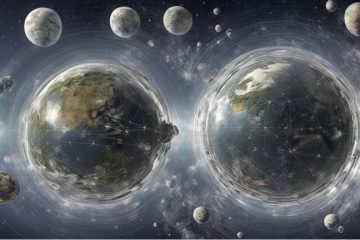Conformation and Transformation: Two Ways of Thinking about the World

Two warring impulses operate in the world’s religious and wisdom traditions—within as well as across them. Echoes of these impulses can be felt also in secular traditions, but here, I focus largely on religious expressions. One impulse is to interpret the world rightly and attune persons and communities to the world so interpreted. Let us call this conformation. The other impulse is the drive toward transformation. The world and humanity are broken and so must be transformed. Here’s the catch: both impulses are on the mark, and both conformation and transformation need each other. What could be more shortsighted than trying to transform a world you can’t interpret correctly and so don’t understand and are not attuned to. Let me spell this out.
A variety of religious and secular traditions suggest that human life goes wrong when human beings fall out of tune with the way the world really is. But, from an ultimate perspective—from the way the world really is before we misinterpret it—nothing is in truth wrong with the world. On the religious conformational view, the world is ordered toward love, or said another way, the world is inseparable from the divine, the source of love. Our true nature is divine (source of love) or inseparable from the divine. The trouble is that we don’t recognize this and so do all manner of inappropriate or injurious things. In other words, the problem is ignorance, our failure to see things as they really are.
Advaita Vedanta is this kind of tradition. It holds that the true nature of the self is Brahman, ultimate reality. By ultimate reality, I mean whatever a tradition takes to be the most true and abiding reality, what is really real not just what appears to be real. Advaita does not, by and large, orient itself around God as a personal being but as the ground of being. You and I are this true reality, this ground of being, Brahman.
But we are in the mess we’re in because we mistakenly believe that we are nothing more than the body-mind complex. That complex, of course, changes all the time and is bound to perish. Believing that we are nothing more than finite and limited creatures, we crave and even hoard the things we believe will make us feel less limited and vulnerable. Wealth, fame, and social status perhaps. This is the human predicament.
The cure: to be taught by scripture and by a person who understands reality, a guru, that we are not just our finite minds and bodies. We must realize that we are Brahman, the imperishable ultimate. When we do, we surrender our inordinate cravings for material and social goods. Instead, we are filled with a sustainable compassion for all others, who, of course, are not really “other” because they too are not merely body/mind complexes but true reality, ground of being. This is an example of a conformation tradition. True, transformation takes place, but only because we come into conformity with the way the world already is.
Christian traditions tend, by contrast, to be transformation traditions. The primary focus is on a coming future in which the world as we know it is healed. That orientation, of course, means that world is now not healed but broken. We are alienated from God, from each other, and even from ourselves. How it got to be that way and how serious that brokenness is much disputed. The bleakest views speak of original sin, that we have been broken since Adam’s fall from oneness with God’s vision in Eden—whether read literally or metaphorically. Things are so badly broken that we cannot fix things ourselves. Absent infusions of healing grace from God, which brings us back to God’s vision, we are incapable of curing our personal and communal self-centeredness. We are, to put it in technical theological terms, screwed.
Thankfully, we are not left to our own devices. In Christian traditions, God has entered the human condition and lived a life that shows us what his vision for the world looks like. By becoming one with us in living a human life and death, he renewed us into a new life of love through his life, death, and resurrection, by giving his life for our sake and thus showing what love for others looks like.
Now, the project of ongoing transformation from our present ways of living to more loving ways is in our hands. It’s not exactly a DYI project, however. God’s Spirit helps us. Transformation is our call—the call to heal the broken world by building the Beloved Community, a community marked by justice, equity, and love. Jesus called this the Kingdom of God, which has broken into our world but is not yet fulfilled. Just look around. Grave injustices continue between human beings, and now we are on the verge of ecocide. Transformation must be the human project. Conformation is not enough. It is not enough to be rightly attuned to the world if it is terribly broken. Little good can come from that. The world must be transformed to something closer to God’s vision for it and us.
These summaries are simplified, schematic, and artificially separated. Pick any thinker within a religious or secular tradition, and they are likely to sound both notes in some combination. Also, the impulse to transformation is itself a kind of conformation—a coming into right alignment with the divine will for the repair of the world (in Hebrew, tikkun olam).
Still, there’s no getting away from the genuine tension between these two ways approaching the human condition. Conformation traditions are unlikely to place as much emphasis on the future as transformation traditions do. The focus must be on the now, on the present moment, in which we come to see things as they really are and not as they appear to be.
By contrast, transformation traditions, religious and secular (think liberalism or socialism), are dissatisfied with things as they are now, so they work and hope for a better tomorrow. Hope will be a central virtue in transformation traditions. In conformation traditions, hope might even be a vice, a restless unwillingness to stay in the present moment. What is matters most for conformation traditions, what ought to be, for transformation traditions.
One reason for the importance of dialogue between holders of conformation and transformation worldviews is that each needs the richest insights of the other. Take climate change. The human species must understand itself as part of nature, as the world is—conformation. But that understanding must trigger vast changes to eliminate our addiction to fossil fuels–transformation. Tragically, the wrong sort of emphasis on transformation without conformation to the natural world, may be why we are in this crisis in the first place. We were so preoccupied with transformation of the world by technology and industry that we failed to think about fitting in with nature and place. The proper balance would not sever transformation from conformation but join them.
We need, after all, both to come to a better understanding of the now, of our species in the natural world, even as we recognize that there is still so very much that is not right with humanity. The tensions between conformation and transformation are real and perhaps even irreconcilable, but our human and planetary future depends on our capacity to integrate creatively the deepest wisdom from both kinds of tradition.
#
John J. Thatamanil is Associate Professor of Theology and World Religions at Union Theological Seminary. He is also Volunteer Curate at the Anglican Church of St. John the Divine in Victoria, BC, and Theologian to the Diocese of Islands and Inlets. He is the author of Circling the Elephant: A Comparative Theology of Religious Diversity. He teaches courses on comparative theology, theologies of religions as well as a course on Gandhi and King. He is a past-President of the North American Paul Tillich Society and current Chair of the American Academy of Religion’s Theological Education Committee. His Op-Eds have appeared in the Washington Post, the Los Angeles Times and a variety of sites online.
Counterpoint blogs may be reprinted with the following acknowledgement: “This article was published by Counterpoint Navigating Knowledge on 1 December 2021.”
The views and opinions expressed on this website, in its publications, and in comments made in response to the site and publications are those of the author(s) and do not necessarily reflect the views and opinions of Counterpoint: Navigating Knowledge, its founders, its staff, or any agent or institution affiliated with it, nor those of the institution(s) with which the author is affiliated. Counterpoint exists to promote vigorous debate within and across knowledge systems and therefore publishes a wide variety of views and opinions in the interests of open conversation and dialogue.
Photo credit: Joshua Rappeneker licensed under CC BY-SA 2.0



